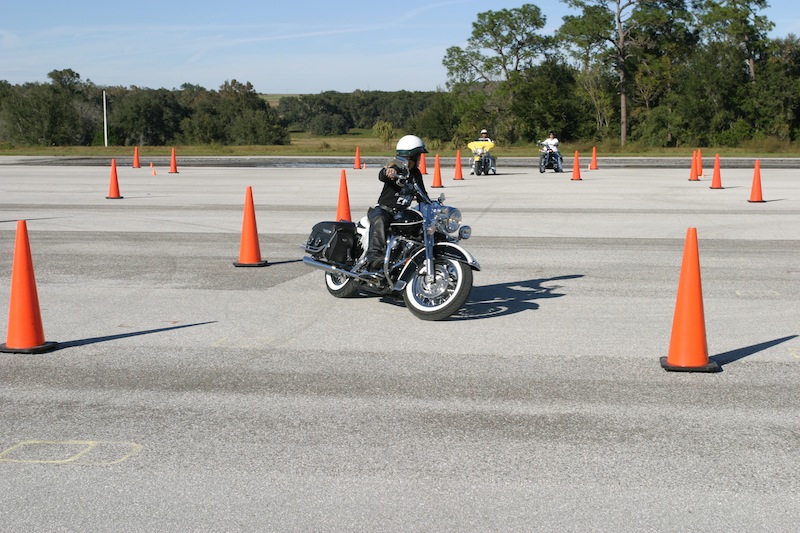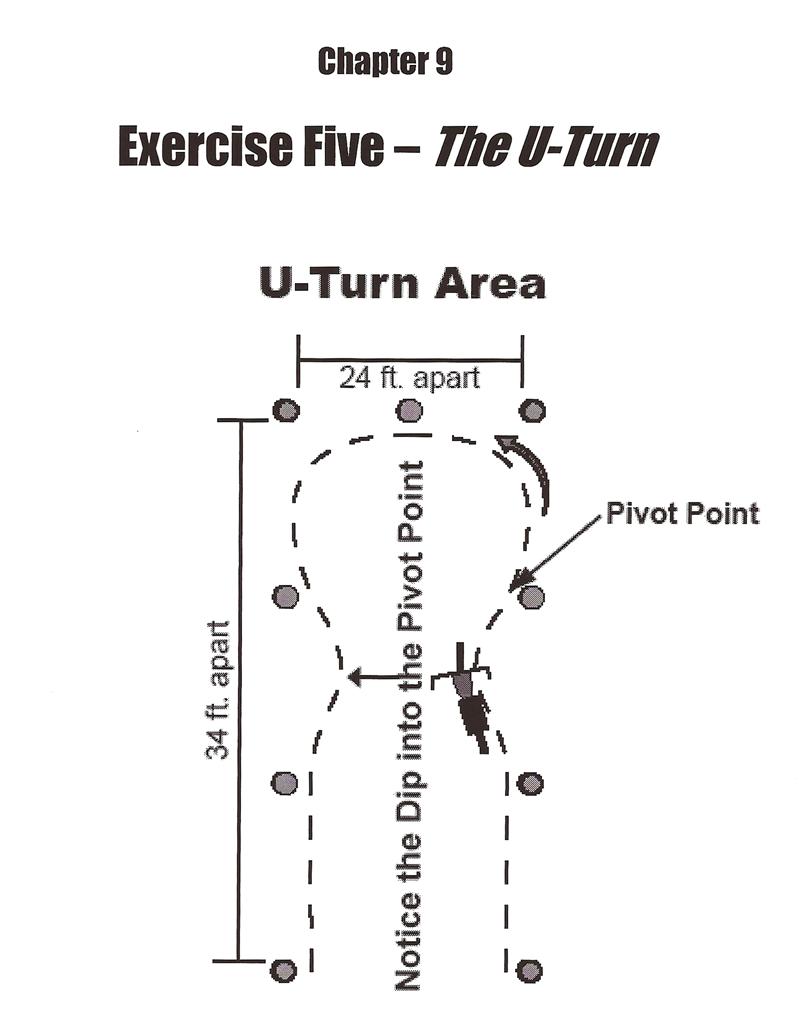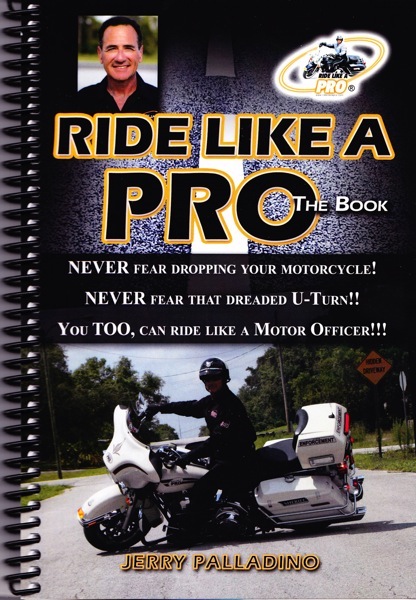
The trick to the U-turn is to use a dip. Mark a pivot point about 12 feet from the end of your U-turn space. (See diagram below.) Hug the right side of your marked-off area, then just before you approach your pivot point, turn the bars quickly to the left, away from the pivot point, then to the right toward the pivot point. Once your front tire is heading toward the pivot point, quickly snap your head and eyes as far to the left as you possibly can. In other words, you’re looking over your left shoulder.

The entire time you’re performing the U-turn you need to be in the friction zone and have a little pressure on the rear brake. Your speed should be about 5 mph.Allow the motorcycle to lean as you turn the handlebars. You need only lean about as far as the bike leans when it’s sitting on the kickstand.Don’t ever look at the opposite side of the U-turn area. Even a split-second glance in that direction will cause you to steer the motorcycle toward the left side of the turn—doing that will make your turn considerably wider than 24 feet. Most full-size cruisers can turn in 18 feet, meaning you have 6 feet of error.

Common Mistakes
1. The most common mistake riders make during this exercise is looking at the opposite side of the U-turn instead of immediately turning their head and eyes as far to the left as possible.
2. The second most common mistake is going too slowly and then attempting to turn with the bike straight up—you must have a little momentum in order to lean the bike.
3. Mistake number three is pulling the clutch in or releasing the throttle right in the middle of the U-turn. Doing either one of those two things will cause the bike to tip over, as gravity will pull you to the groundwhen theres no power to the rear wheel.
4. Mistake number four isbrieflystraightening out the handlebars as the bike transitions to the left. Straightening out the handlebars, even for a split second, will cause the bike to go straight for two or three feet, which will cause you to lose space while making the U-turn.
Watch this video as Jerry instructs riders trying to execute the above technique. Its very helpful to watch!

Related Articles
REVIEW: “Ride Like A Pro” Book
Riding Right: Get More Control Over Your Motorcycle
Riding Right: No More Wide Turns


Very informative.
Had to ride a little before these videos made any sense to me. As always I have learned a lot. I did the Riders Plus at a community college four years ago. This has saved my life more than once. Went to a full-sized bike a year after the course and continue to learn regularly. I overcame the fear of riding in the first year. I have never overcome the “respect of fear.” I continually learn and have come to love riding. I am now 65 and hope to have many more years of riding ahead. It is a lifestyle.
This was very helpful. What suggestions would you have for riding double and u-turning? Our group has a tendency of doing this quite often.
The same techniques apply whether you are riding alone or two-up. The passenger should not make any sudden moves, rather continue to stay seated right behind the rider so that there is no shift in weight.
As a new rider, I love reading and watching video’s on how to be a better rider, Jerry has some of the best I’ve seen. This is a keeper. Will be setting up my practice course tomorrow! Thanks
I love reading the tips from Jerry. These are very informative for any level riders. Keep them coming. Thank you.
I always like practice the riding maneuvers I see in Jerry’s videos.
Also, never look at the ground directly in front of you, that’s when you end up putting your foot down. Always look where you want to be, not where you’re at.
Jerry’s videos are great. Really helps you to learn. You can never have enough knowledge. It will keep you safe and you can have fun at the same time!
Thanks for another great article. This is one of those maneuvers that’s so commonly done, and still causes moments of panic for me. Your explanation is perfect, so it’s back to the parking lot for me to work on this!